Have you ever wondered where in the Philippines you can find a tropical paradise with white sand beaches and crystal-clear turquoise waters? Look no further than Boracay. This idyllic resort island is located in the Western Visayas region of the Philippines, just 0.8 kilometers off the northwest coast of Panay.
Boracay’s coordinates are 11°58’8″N 121°55’26″E, and it falls under the jurisdiction of three barangays in Malay, Aklan. With a total land area of 10.32 square kilometers, this small piece of paradise is easily accessible and offers a range of natural wonders and activities for visitors.
Key Takeaways:
- Boracay is a resort island situated in the Western Visayas region of the Philippines.
- It is located 0.8 kilometers off the northwest coast of Panay.
- The island’s coordinates are 11°58’8″N 121°55’26″E.
- Boracay falls under the jurisdiction of three barangays in Malay, Aklan.
- The island has a total land area of 10.32 square kilometers.
Geography of Boracay Island
Boracay Island, a jewel in the Visayas archipelago of the Philippines, is known for its stunning natural beauty and picturesque landscapes. Situated in the province of Aklan, Western Visayas, this tropical paradise offers a diverse range of geographical features that make it a true gem for nature enthusiasts and adventure seekers.
Surrounded by the Jintotolo Channel, Sibuyan Sea, Sulu Sea, and Tablas Strait, Boracay Island is embraced by the sparkling waters of multiple bodies, creating a mesmerizing coastal experience. The island spans a total area of approximately 10.32 square kilometers, providing ample space for exploration and relaxation.
The highest point on Boracay Island is Mount Luho, towering at an elevation of 302 feet. From this peak, visitors can revel in breathtaking panoramic views of the island and its surroundings. It’s a sight that captures the imagination and leaves an indelible impression.
Administered by the municipality of Malay, Boracay Island boasts a unique blend of natural wonders and human influence. Although the island has experienced significant development in recent years due to tourism, its inherent geography remains intact, providing an enchanting backdrop for all who visit.
Population and Demographics of Boracay
Boracay is not only a stunning travel destination but also home to a diverse population. As of 2020, the island has a population of 37,802 people, creating a vibrant community that welcomes visitors from all around the world.
The residents of Boracay represent various ethnic groups, showcasing the cultural diversity of the Philippines. Among the prominent ethnic groups found on the island are the Ati, Aklanon, Hiligaynon, and Karay-a. This rich blend of cultures adds depth and authenticity to the local experience when visiting Boracay in the Philippines.
When exploring Boracay, one of the largest settlements you’ll come across is Manoc-Manoc. This bustling community boasts a population of 14,810 and offers a glimpse into the day-to-day life and vibrant spirit of the island.
So when you’re planning your trip to Boracay, remember that not only will you be surrounded by breathtaking natural beauty, but you’ll also have the opportunity to engage with the diverse and welcoming people who call this tropical paradise home.
Boracay as a Travel Destination
Boracay, located in the Philippines, is a highly sought-after travel destination for tourists worldwide. With its pristine white sand beaches and breathtaking turquoise waters, it offers an idyllic tropical escape that is hard to resist.
One of the main draws of Boracay is its wide range of activities catered to all kinds of travelers. Whether you’re an adventure seeker or someone looking to relax and unwind, Boracay has something for everyone.
Water Sports and Exciting Adventures
For those seeking thrill and excitement, Boracay provides an array of water sports to get your adrenaline pumping. Try your hand at windsurfing, kiteboarding, or parasailing for an exhilarating experience that will leave you wanting more.
If you prefer to explore beneath the crystal-clear waters, snorkeling and scuba diving are highly recommended. Get up close and personal with vibrant coral reefs, tropical fish, and other fascinating marine life that call the waters of Boracay home.
Island Hopping and Beyond
Embarking on an island hopping adventure is another must-do activity in Boracay. Discover hidden coves, secluded beaches, and stunning viewpoints as you hop from one picturesque island to another. Make sure to visit Puka Beach and Diniwid Beach for their unspoiled beauty and serenity.
For a unique experience, take a tour to Ariel’s Point, where you can indulge in cliff diving and take in breathtaking panoramic views of Boracay’s coastline.
Relaxation and Beachside Bliss
Of course, no visit to Boracay is complete without spending time relaxing on its world-famous beaches. Feel the soft powdery sand between your toes as you soak up the warm tropical sun. Enjoy a refreshing swim in the crystal-clear waters or simply unwind with a book while enjoying the gentle sea breeze.
“Boracay is a dream destination for beach lovers. The combination of its stunning beaches, vibrant nightlife, and warm hospitality makes it a truly unforgettable experience.” – Travel Enthusiast
In recognition of its unparalleled beauty, Boracay was named the Best Island in the World by Travel + Leisure magazine in 2012. With its natural wonders and captivating charm, it’s no wonder why Boracay continues to captivate the hearts of travelers around the globe.
Boracay’s Renovation and Reopening
In 2018, the Philippine government took a significant step towards preserving the natural beauty of Boracay by implementing a major renovation project. This six-month endeavor aimed to address critical environmental issues, particularly pertaining to the island’s sewage system. Recognizing the importance of sustainability, the authorities focused their efforts on ensuring a cleaner and more environmentally friendly future for Boracay.
After months of rigorous work and extensive improvements, Boracay Island was reopened to the public in October 2018. The reopening came with a set of new rules and regulations designed to enforce responsible tourism practices and safeguard the island’s delicate ecosystem. These measures have not only enhanced the overall visitor experience but also contributed to the long-term preservation of Boracay’s natural resources.
Since its reopening, much effort has been dedicated to maintaining the cleanliness and sustainability of Boracay’s pristine beaches. Various initiatives, including regular beach cleanups and strict waste management policies, have been implemented to ensure that the island remains an idyllic destination for both locals and tourists alike.
Efforts to preserve and protect the beauty of Boracay’s beaches have been ongoing since the renovation and reopening of the island. These initiatives reflect the commitment of both the local government and the community in promoting sustainable tourism and preserving the natural wonders that make exploring Boracay such a captivating experience.
Boracay’s renovation and reopening ushered in a new era for the island, one that prioritizes responsible tourism and environmental consciousness. By exploring Boracay, visitors can witness firsthand these efforts to create a harmonious balance between tourism and the preservation of nature’s wonders.
| Renovation Highlights: | Benefits: |
|---|---|
| Upgraded sewage system | Improved water quality |
| Strict waste management policies | Reduced environmental impact |
| Enforced responsible tourism practices | Preserved natural resources |
Festivals and Cultural Heritage of Boracay
Boracay, besides its renowned beaches, is also known for its vibrant festivals that celebrate the cultural heritage of the Ati indigenous people. One such festival, the Boracay Ati-Atihan, attracts a significant number of tourists every year.
The Boracay Ati-Atihan festival showcases the vibrant traditions and customs of the Ati community. It is a colorful and lively celebration filled with elaborate costumes, street parades, dance performances, and music. Tourists have the opportunity to immerse themselves in the rich culture and history of the Ati people.
The Boracay Ati-Atihan festival is a true spectacle that brings together locals and tourists, creating an unforgettable experience for all. The festivities highlight the unity, resilience, and joy of the Ati community and inspire a deep appreciation for their cultural heritage.
Visitors can witness traditional rituals, including the “mangayaw,” a mock battle dance that symbolizes the unity and strength of the indigenous community. The festival is also an excellent opportunity to try traditional Ati dishes and learn more about their way of life.
Attending the Boracay Ati-Atihan festival is a must for anyone looking to experience the vibrant cultural heritage of the Philippines. It is a testament to the diversity and richness of the country’s indigenous communities.
Map of Boracay
For visitors looking to explore Boracay, familiarizing themselves with the map coordinates can be helpful. Located in the Western Visayas region of the Philippines, Boracay’s map coordinates are:
- Latitude: 11°58’8″N
- Longitude: 121°55’26″E
These coordinates pinpoint the exact location of Boracay, allowing travelers to plan their itinerary and navigate the island with ease.
| Festival | Date | Significance |
|---|---|---|
| Boracay Ati-Atihan | Third week of January | Celebration of Ati culture and heritage |
| Boracay Dragon Boat Festival | April | Dragon boat races and cultural performances |
| Boracay Food Festival | May | Culinary showcase of local and international flavors |
Etymology of the Name Boracay
The name Boracay has multiple origins, each reflecting the island’s unique characteristics and cultural heritage. According to the indigenous Ati people, the name Boracay comes from the Inati words “bora,” meaning bubbles, and “bocay,” meaning white. This name perfectly captures the essence of Boracay’s pristine beaches, where the waves gently form foamy white bubbles on the shore.
Another theory suggests that Boracay’s name is derived from the local word “borac,” which means white cotton. This interpretation emphasizes the resemblance between the soft, powdery sand of Boracay’s beaches and the delicate texture of white cotton.
Regardless of its origin, the name Boracay beautifully encapsulates the island’s natural beauty and allures visitors with visions of crystal-clear waters and dazzling white sands.
The official address of Boracay Island is located in the municipality of Malay, Aklan, Philippines. Situated in the heart of the archipelago, the island offers a tropical paradise that attracts travelers from around the world.
| Etymology | Meaning |
|---|---|
| Inati words “bora” and “bocay” | Bubbles and white |
| Local word “borac” | White cotton |
Pre-Colonial History of Boracay
The history of Boracay dates back to the pre-colonial era when the island was home to the indigenous Ati people. These resilient inhabitants cultivated rice on the fertile land of Boracay, using traditional agricultural practices to sustain their communities. In addition to rice farming, the Ati people also raised goats, which served as a supplementary source of income and sustenance.
Alongside the Ati people, the Tumandok people also established a presence on Boracay Island. These indigenous groups coexisted harmoniously, each contributing to the cultural tapestry of the island.
“The Ati people have a rich history on Boracay Island, with their traditions and way of life deeply intertwined with the land and sea,” says Dr. Maria Santos, a cultural anthropologist specializing in indigenous communities. “Their knowledge of sustainable farming and fishing practices showcases their deep connection with nature and their ability to thrive in harmony with their surroundings.”
However, over the years, commercial development and tourism have brought about significant changes to the landscape of Boracay. The rapid growth of infrastructure and tourism-related activities has resulted in the marginalization of the Ati and Tumandok people. Their ancestral lands have gradually been encroached upon, altering the social and economic dynamics of the island.
The Boracay Coexist Program
In recognition of the importance of preserving the cultural heritage and rights of the indigenous groups in Boracay, the local government and various organizations have initiated the Boracay Coexist Program. This program aims to promote dialogue, understanding, and inclusivity between the local community, tourism stakeholders, and the indigenous people.
The Boracay Coexist Program focuses on sustainable development that takes into account the needs of the Ati and Tumandok people while ensuring the continued growth of tourism. It seeks to strike a balance between economic progress and cultural preservation, creating opportunities for mutual benefit.
“The Boracay Coexist Program is a testament to the commitment of the local government and concerned organizations to address the challenges faced by the indigenous communities,” says Amanda Ramirez, a cultural heritage advocate. “It aims to promote social justice, cultural empowerment, and environmental sustainability, encapsulating the spirit of coexistence.”
Through the Boracay Coexist Program, efforts are being made to provide the indigenous communities with access to social services, education, and economic opportunities. This includes initiatives such as cultural tours, where visitors can gain insights into the rich heritage of the Ati and Tumandok people. By bridging the gap between tourists and the indigenous communities, the program aims to create a platform for cultural exchange and understanding.
While challenges remain, the Boracay Coexist Program represents a crucial step towards preserving the pre-colonial history and cultural identities of the indigenous groups in Boracay. It highlights the importance of responsible tourism and sustainable development in ensuring that future generations can appreciate the island’s vibrant heritage while also enjoying its natural beauty and hospitality.
Development and Tourism in Boracay
Boracay Island, located in the Philippines, has undergone significant development over the years to become one of the most popular tourist destinations in the country. Initially, Boracay was primarily an agricultural community. However, with its stunning beaches and natural beauty, the island quickly caught the attention of Western tourists in the 1970s.
The influx of visitors was further boosted by German writer Jens Peter’s book, which described Boracay as a “paradise on Earth.” As word spread about the island’s picturesque landscapes and crystal-clear waters, it became a must-visit destination for travelers seeking tropical paradise.
By the 1990s, Boracay had gained global recognition for its pristine beaches, with White Beach often being hailed as one of the best in the world. Tourists flocked to Boracay to experience its idyllic setting and engage in various water activities.
“Boracay is like no other place on Earth. The white sandy beaches and turquoise waters create a surreal environment that captivates visitors from the moment they step foot on the island.” – Traveler’s Review
However, the surge in tourism also revealed some challenges. Issues with the island’s sewage and septic systems emerged, leading to environmental concerns and a decline in tourist arrivals in 1997. Recognizing the need for sustainable development, the Philippine government took action to address these issues.
| Year | Tourist Arrivals | Major Developments |
|---|---|---|
| 1970s | First influx of Western tourists | Opening of resorts and hotels |
| 1990s | Peak tourist arrivals | Recognition as a top beach destination |
| 1997 | Decline in tourist arrivals | Awareness of environmental issues |
In recent years, efforts have been made to strike a balance between development and environmental sustainability in Boracay. The government introduced measures to rehabilitate and preserve the island’s natural resources, including the mandatory closure of the island for six months in 2018.
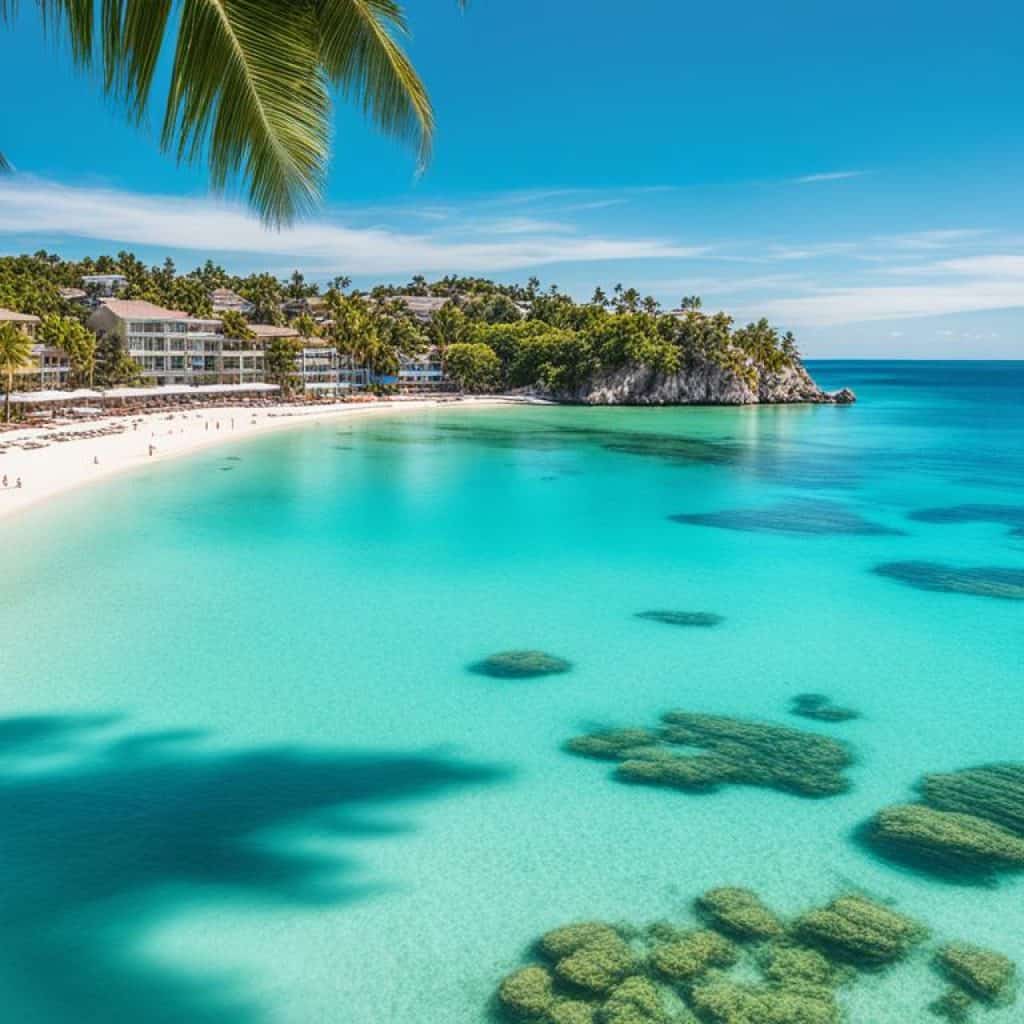
Through ongoing initiatives, Boracay continues to evolve as a world-class destination that offers a harmonious blend of development and natural beauty. Today, visitors can enjoy the island’s pristine beaches and engage in various activities while being mindful of the need to protect and preserve this tropical paradise for future generations.
Rehabilitation and Environmental Efforts in Boracay
In 2018, President Rodrigo Duterte took a decisive step towards preserving and protecting the natural beauty of Boracay. The island, facing environmental challenges, such as an outdated sewage system, required immediate attention. As a result, President Duterte ordered the closure of Boracay, initiating a comprehensive rehabilitation program.
The primary focus of the rehabilitation efforts was the improvement and modernization of the sewage system on the island. The aim was to address the persistent issue of inadequate waste management and ensure a sustainable future for Boracay.
Since the reopening of the island, significant progress has been made in implementing sustainable practices. The newly upgraded sewage system has played a crucial role in maintaining the pristine condition of the beaches. Environmental regulations and stricter laws have also been enforced to minimize any negative impact on the island’s ecosystem.
The rehabilitation efforts in Boracay serve as a testament to the commitment of the Philippine government and local authorities towards preserving this natural wonder. The ongoing initiatives not only strive to restore and enhance Boracay’s environmental integrity, but also to create a model for sustainable tourism.
Implementing Sustainable Practices
Boracay’s rehabilitation has paved the way for the implementation of sustainable practices that promote responsible tourism. From waste management strategies to eco-friendly initiatives, the island has taken significant steps towards ensuring the long-term preservation of its natural resources.
- Proper waste segregation and disposal programs have been put in place to minimize pollution and protect marine life.
- Beach clean-up campaigns, involving both local communities and tourists, have become regular activities to maintain the cleanliness of the shores.
- The use of single-use plastics has been restricted, and sustainable alternatives are encouraged.
- Awareness programs and educational campaigns raise public consciousness about the importance of environmental conservation.
- Efforts to protect coral reefs and marine sanctuaries have been intensified to safeguard the diverse marine ecosystem surrounding Boracay.
Maintaining the Pristine Condition
Through a combination of sustainable practices and strict enforcement of environmental regulations, Boracay has managed to maintain its pristine condition. Ongoing monitoring and regular inspections ensure compliance with the implemented guidelines, preventing any degradation of the island’s natural beauty.
“The rehabilitation of Boracay serves as an inspiration for other tourist destinations facing similar environmental challenges. It demonstrates the positive impact of concerted efforts towards sustainability and the preservation of natural resources.”
The successful rehabilitation of Boracay is a testament to the dedication of the Philippine government and the collaborative efforts of various stakeholders. As the island continues to evolve, it serves as an example of how responsible tourism can coexist with ecological preservation, creating a harmonious balance that benefits both visitors and the environment.
Must-Visit Beaches in Boracay
Boracay, with its breathtaking scenery and crystal-clear waters, is home to some of the best beaches in Boracay. Whether you’re seeking a vibrant atmosphere or a serene escape, the island offers a beach for every preference and mood. Here are a few of the must-visit beaches in Boracay:
1. White Beach
White Beach is the crown jewel of Boracay and undoubtedly one of the most famous beaches in the world. Stretching over four kilometers along the island’s western side, White Beach boasts powdery white sand, gently swaying palm trees, and stunning sunsets. The beach is divided into three sections: Station 1, Station 2, and Station 3, each offering a unique experience.
2. Puka Beach
Puka Beach, also known as Yapak Beach, offers a tranquil and secluded retreat away from the bustling crowds. Named after the Puka shells found abundantly along its shores, this beach is renowned for its natural beauty and untouched ambiance. Visitors can enjoy sunbathing, swimming, and long walks along the pristine coastline.
3. Diniwid Beach
Diniwid Beach offers a serene alternative to the liveliness of White Beach. Located just north of Station 1, this hidden gem boasts a tranquil atmosphere and stunning views of the surrounding cliffs. Visitors can relax on the beach, indulge in delicious local cuisine at the beachside restaurants, or explore the nearby snorkeling spots.
4. Ilig-Iligan Beach
Ilig-Iligan Beach is a hidden treasure tucked away on the northern tip of Boracay. Known for its clear turquoise waters and powdery white sand, this secluded beach offers a serene escape from the crowds. Visitors can enjoy swimming, snorkeling, and picnicking in the peaceful surroundings.
5. Punta Bunga and Banyugan Beaches
Punta Bunga and Banyugan Beaches are situated in an exclusive area of Boracay, accessible only to guests of the Shangri-La’s Boracay Resort and Spa. These private beaches offer unparalleled luxury and tranquility, with pristine sands and crystal-clear waters. Visitors can indulge in a range of activities, from sunbathing to water sports, and enjoy world-class amenities.
Whatever your preference, Boracay’s best beaches are sure to captivate you with their natural beauty and inviting ambiance. Whether you’re seeking relaxation or adventure, these beaches offer an idyllic setting for a memorable vacation.
Water Activities in Boracay
Boracay, with its pristine beaches and crystal-clear waters, is a haven for water sports enthusiasts. Whether you’re an adrenaline junkie or looking for a relaxing aquatic experience, Boracay offers a wide range of thrilling water activities to suit every preference.
1. Snorkeling
Immerse yourself in the vibrant underwater world of Boracay by snorkeling in its clear turquoise waters. Discover colorful coral reefs, exotic marine life, and perhaps even spot sea turtles gliding gracefully through the ocean.
2. Scuba Diving
Dive deep into the depths of Boracay’s aquatic wonders with scuba diving. Explore diverse dive sites, such as Yapak and Crocodile Island, where you can encounter fascinating sea creatures and explore captivating underwater landscapes.
3. Jet Skiing
Feel the adrenaline rush as you zoom across the sparkling waters on a thrilling jet ski ride. Experience the thrill of speed and freedom as you carve through the waves and enjoy panoramic views of Boracay’s coastline.
4. Paddleboarding
Engage in a serene and meditative water sport by trying paddleboarding in Boracay. Balance yourself on a board and paddle through the calm waters, taking in the breathtaking views of the island’s coastline and enjoying a unique perspective of your surroundings.
5. Parasailing
Soar high above the azure waters of Boracay and take in panoramic views of the island’s stunning landscape while parasailing. Experience the exhilaration of floating in the sky as you are gently lifted by a parachute and carried by a speedboat.
6. Sailing on a Traditional Paraw Boat
Embark on a cultural and relaxing sailing experience aboard a traditional paraw boat. Enjoy the gentle sea breeze as you glide along Boracay’s shores, taking in the stunning views of the island’s coastline and capturing memorable moments.
| Water Activity | Description |
|---|---|
| Snorkeling | Explore the vibrant underwater world of Boracay’s coral reefs and marine life. |
| Scuba Diving | Discover diverse dive sites and encounter fascinating sea creatures in Boracay’s waters. |
| Jet Skiing | Experience the thrill of speed as you jet across Boracay’s sparkling waters. |
| Paddleboarding | Engage in a serene and meditative water sport as you paddle along Boracay’s coastline. |
| Parasailing | Soar high above Boracay and enjoy breathtaking views of the island from the sky. |
| Sailing on a Traditional Paraw Boat | Relax and indulge in the beauty of Boracay’s coastline aboard a traditional paraw boat. |
Whether you choose to explore the underwater world, feel the thrill of speed, or simply indulge in relaxation on the water, Boracay offers an array of water activities that promise unforgettable experiences and memories to cherish.
Unique Experiences in Boracay
While Boracay is known for its stunning beaches and thrilling water activities, the island also offers a range of unique experiences that are sure to add excitement and adventure to your visit.
1. Cliff Diving at Ariel’s Point
For the adrenaline junkies, a visit to Ariel’s Point is a must. Located just a short boat ride from Boracay, this breathtaking cliff diving spot offers various platforms for you to take the plunge. Whether you’re a first-timer or an experienced diver, the thrill of jumping off the cliffs into the crystal-clear waters is an experience you won’t forget.
2. Exploring Crystal Cove Island
Crystal Cove Island is a hidden gem waiting to be discovered. Take a boat ride to this picturesque island and explore its natural caves, stunning rock formations, and hidden lagoons. Don’t forget to bring your snorkeling gear to uncover the vibrant marine life that surrounds the island.
3. Joining a Boracay Pub Crawl
Looking for a fun night out? Joining a Boracay Pub Crawl is the perfect way to experience the island’s vibrant nightlife. Embark on an unforgettable journey as you hop from one bar to another, meeting new people, and enjoying discounted drinks along the way. It’s a great opportunity to socialize, dance, and create lasting memories.
4. Swimming like a Mermaid
Release your inner mermaid or merman and dive into the magical world of mermaiding. Learn how to swim gracefully with a mermaid tail during a mermaid swimming session. It’s a unique experience that allows you to channel your inner fantasy and create enchanting memories.
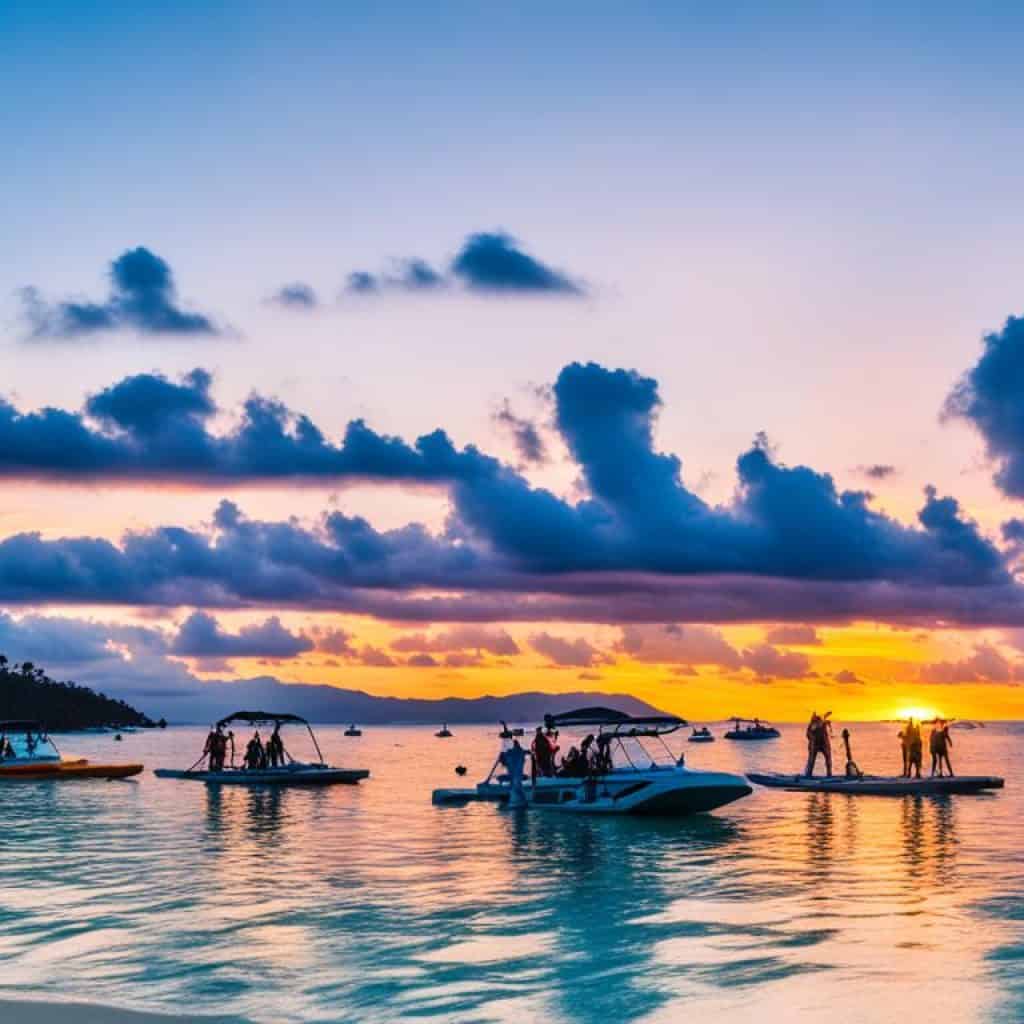
“Boracay offers a captivating blend of natural beauty and thrilling adventures. Cliff diving at Ariel’s Point, exploring Crystal Cove Island, joining a Boracay Pub Crawl, and swimming like a mermaid are just some of the unique experiences that will make your visit to Boracay truly unforgettable.”
Nearby Provinces and Side-Trips from Boracay
While Boracay itself offers an array of attractions and activities, it also serves as a gateway to nearby provinces, each with its own unique charm and cultural experiences. Embarking on side-trips from Boracay allows visitors to explore the rich diversity of the surrounding areas.
One of the nearby provinces worth exploring is Aklan. Located on the island of Panay, Aklan offers stunning natural landscapes and historical sites. Take a trip to the town of Ibajay and marvel at the panoramic views from Suhoton Cliff. Visit the Bakhawan Eco-Park in Kalibo, a mangrove forest perfect for nature enthusiasts. Immerse yourself in the local culture by attending the Ati-Atihan Festival, a vibrant celebration in honor of the Santo Niño.
Antique is another province accessible from Boracay, offering a wealth of natural wonders. Experience the breathtaking beauty of Malumpati Cold Spring, where you can swim and enjoy the cool, crystal-clear waters. Discover the captivating Bugang River and go on a thrilling river cruise. Antique is also home to the wondrous Mararison Island, known for its pristine beaches and hiking trails.
Capiz, known as the “Seafood Capital of the Philippines,” is also within reach from Boracay. Indulge in a delectable seafood feast and savor the freshness of the local catch. Explore the historic city of Roxas and visit attractions such as the Panay Church and the Capiz Provincial Capitol. For nature enthusiasts, a visit to Pilar is a must, where you can enjoy the beauty of Baybay Beach and the majestic Hinulugan Falls.
With Boracay as your base, you have the opportunity to embark on unforgettable side-trips to nearby provinces such as Aklan, Antique, and Capiz. Immerse yourself in the diverse cultures, natural wonders, and vibrant experiences that these destinations have to offer.
| Province | Attractions |
|---|---|
| Aklan | Ibajay Suhoton Cliff, Bakhawan Eco-Park, Ati-Atihan Festival |
| Antique | Malumpati Cold Spring, Bugang River, Mararison Island |
| Capiz | Roxas City, Panay Church, Capiz Provincial Capitol, Baybay Beach, Hinulugan Falls |
Conclusion
Boracay Island, located off the northwest coast of Panay in the Philippines, is a sought-after travel destination known for its pristine beaches and vibrant tourism scene. Whether you seek relaxation on the stunning beaches, thrilling water sports adventures, or an opportunity to immerse yourself in the unique local culture, Boracay offers something for every traveler.
With its convenient location, Boracay is easily accessible to visitors from around the globe. The island’s breathtaking natural beauty, crystal-clear waters, and powdery white sand make it a tropical paradise that has captured the hearts of travelers far and wide.
Experience the magic of Boracay as you soak up the sun, indulge in exhilarating water activities, or explore the enchanting cultural heritage of the Ati people. Whether you’re a nature lover, an adventure seeker, or a cultural enthusiast, Boracay promises a memorable and unforgettable journey.
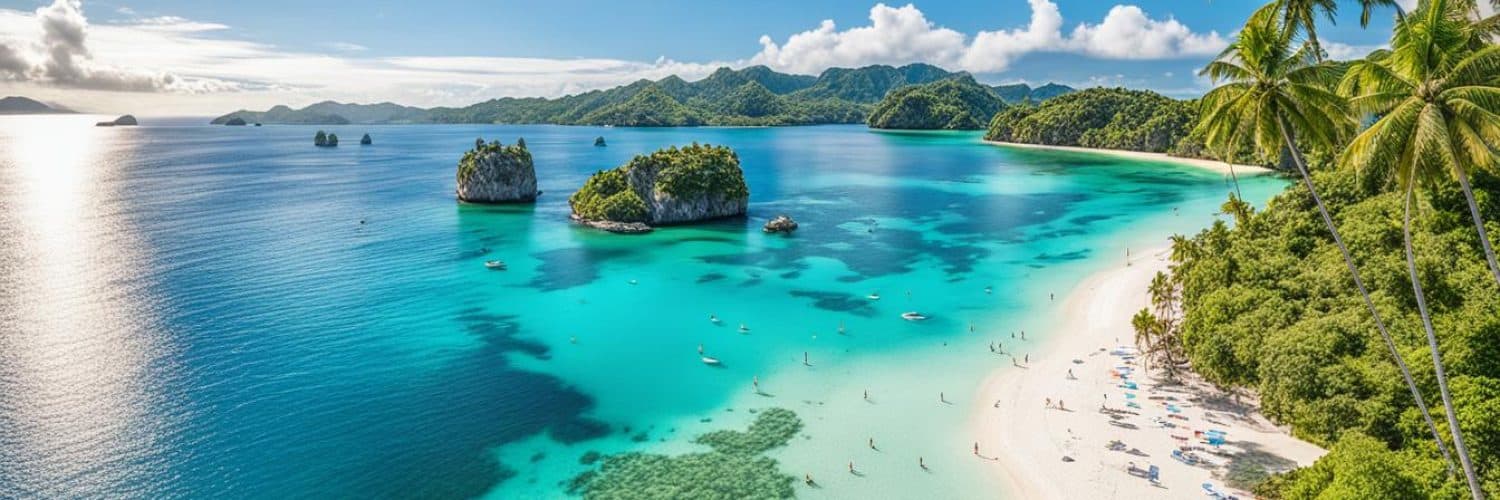

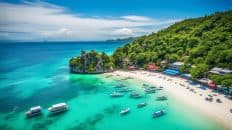
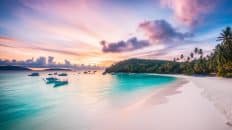














Add comment